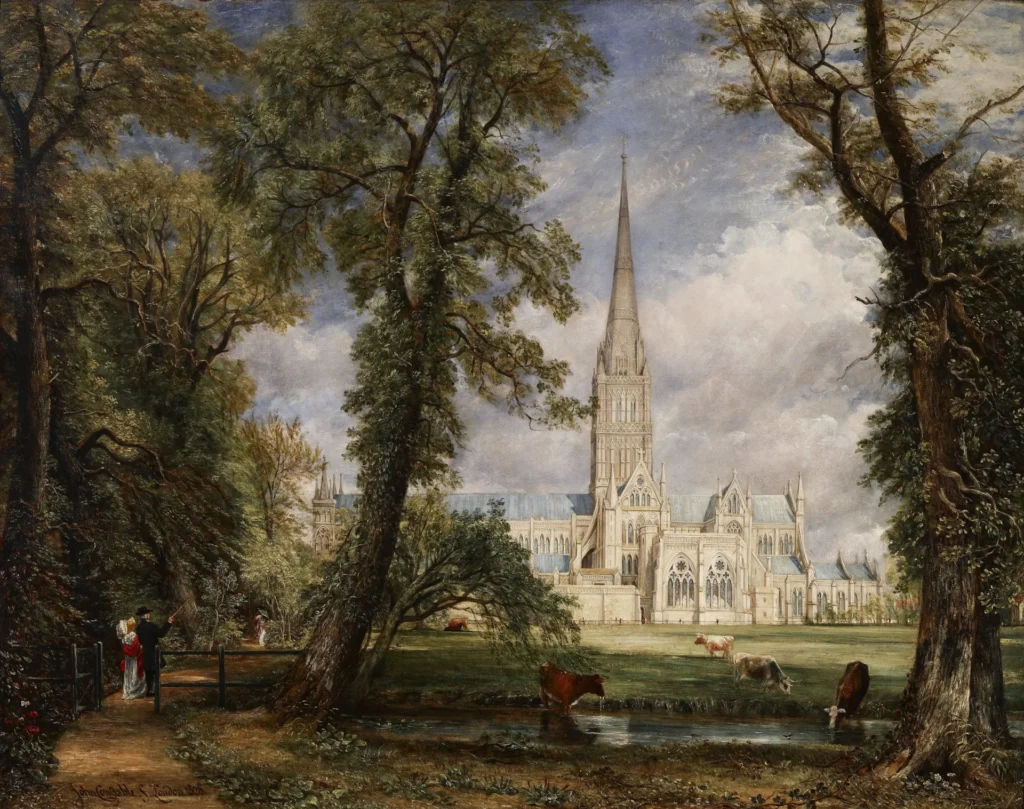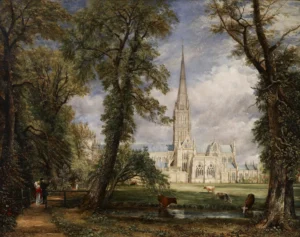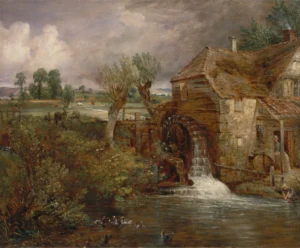Salisbury Cathedral from the Bishop's Garden
In Salisbury Cathedral from the Bishop's Garden. John Constable captures the serene beauty of Salisbury Cathedral as seen from the Bishop's Garden in 1826. Requesting a softer sky, Constable infused this piece with a divine sense of harmony, where the spire rises majestically over a lush landscape. The painting integrates natural elements and architectural grandeur, reflecting the interplay of faith and nature -- a recurrent theme in Constable's oeuvre. This artwork resonates with Constable's deep personal ties to the cathedral and its historical significance yet remains lesser-known compared to his more famous versions.
Year 1826
About the Artwork
The story behind Salisbury Cathedral from the Bishop's Garden is intertwined with John Constable's personal connections and artistic intentions. Completed in 1826, this piece was inspired by a request from Bishop John Fisher, who desired a more tranquil sky than that in Constable's earlier draft. And while the painting displays architectural elegance, it also reflects Constable's philosophical musings on faith, with the cathedral symbolizing divine presence amid nature's beauty. The trees framing the spire, akin to artistic figures in a romantic narrative, allude to Constable's reverence for both spirituality and the natural world. His close relationships with local ecclesiastical figures lend an added layer of intimacy and richness to this significant work.
Did You Know
The serene sky in this painting was specifically requested by Bishop John Fisher, highlighting the collaborative nature of Constable’s artistic process.
Constable had a close relationship with the Bishop and his family, making this painting not just a landscape but a personal homage to their friendship.
John Constable drew inspiration from landscape masters like Claude Lorrain and Thomas Gainsborough, evident in his skillful integration of natural elements with architecture, which was innovative for his time.










